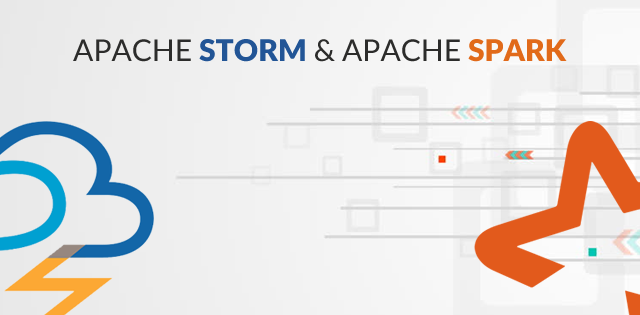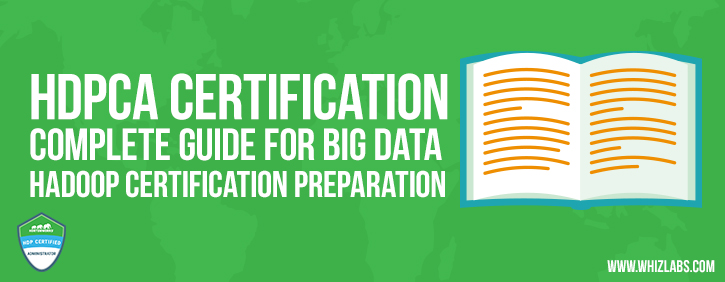With the increase of real-time data, the need for real-time data streaming is also growing. Not to mention, the streaming technologies are leading the Big Data world now. With the newer real-time streaming platforms, it becomes complex for the users to choose one. Apache Storm and Spark are two most popular real-time technologies in the list.
Let’s compare Apache Storm and Spark on the basis of their features, and help users to make a choice. The purpose of this article Apache Storm Vs Apache Spark is not to make a judgment about one or other, but to study the similarities and differences between the two.
In this blog, we will cover the Apache Storm Vs Apache Spark comparison. Let’s start first with the introduction to each, after that we will move to the comparison of Apache Storm Vs Spark on the basis of the features of both.
What is Apache Storm Vs Apache Spark?
To understand Spark Vs Storm, let’s first get into the fundamentals of both!
Apache Storm
Apache Storm is an open source, fault-tolerant, scalable, and real-time stream processing computation system. It is the framework for real-time distributed data processing. It focuses on event processing or stream processing. Storm actualizes a fault tolerant mechanism to perform a computation or to schedule multiple computations of an event. Apache storm is based on streams and tuples.
Apache Spark
Apache Spark is a lightning fast Big Data technology framework for cluster computing. It has been designed to perform fast computation on the processing of large datasets. It is an engine for distributed processing but does not have an inbuilt distributed storage system and resource manager. One need to plug into a storage system and cluster resource manager of own choice.
Apache YARN or Mesos can be used for cluster manager and Google Cloud Storage, Microsoft Azure, HDFS (Hadoop Distributed File System) and Amazon S3 can be used for the resource manager.
Want to learn Apache Spark? Here is the comprehensive guide that will make you learn Apache Spark!
Comparison between Apache Storm Vs Apache Spark
Here we are going to explain feature wise difference between real-time processing tools like Apache Spark and Apache Storm. Let’s have a look at each and every feature one by one to compare Apache Storm vs Apache Spark. It will help us to learn and decide which is one better to adopt on the basis of that particular feature.
1. Processing Model
- Storm: Apache Storm holds true streaming model for stream processing via core storm layer.
- Spark: Apache Spark Streaming acts as a wrapper over the batch processing.
2. Primitives
- Storm: Apache Storm provides wide varieties of primitives that perform tuple level processing at the stream intervals (functions, filters). In a stream, aggregations over information messages are possible via semantic groups e.g. left join, inner join (by default), right join across the stream are sustained by Apache Storm.
- Spark: In Apache Spark, there are two varieties of streaming operators such as output operators and stream transforming operators. Output operators are used for writing information on the external systems and stream transformation operators are used to transform DStream into another.
Apache Spark is one of the top-most Big Data tools. Let’s have a look at the importance of Apache Spark in Big Data industry!
3. State Management
- Storm: Apache Storm does not provide any framework for the storage of any intervening bolt output as a state. That’s why each application needs to create its the state for itself whenever required.
- Spark: Changing and maintaining state in Apache Spark is possible via UpdateStateByKey. But no pluggable strategy can be applied for the implementation of state in the external system.
4. Language Options
- Storm: Storm applications can be created in Java, Scala, and Clojure.
- Spark: Spark applications can be created in Java, Python, Scala, and R.
5. Auto Scaling
- Storm: Apache Storm provides constructing primary parallelism at different levels of topology – variety of tasks, executors and worker processes. Also, Storm provides dynamic rebalancing that can reduce or enhance the number of executors and worker processes without restarting the topology or cluster. But some primary tasks remain constant throughout the topology.
- Spark: The Spark community is working to develop dynamic scaling for streaming applications. Worth mention, the Spark streaming applications don’t support elastic scaling. The receiving topology is static in Spark, and so dynamic allocation can’t be used. It is not possible to modify the topology once the StreamingContext is started. Moreover, aborting receivers will result in stopping the topology.
Looking for an Apache Spark alternative? Here we have covered all the best alternatives for Apache Spark.
6. Fault-Tolerant
Both Apache Spark and Apache Storm frameworks are fault tolerant to the same extent.
- Storm: In Apache Storm, when a process fails, the supervisor process will restart it automatically as state management is managed by Zookeeper.
- Spark: Apache Spark manages to restart workers through resource manager which may be Mesos, YARN or its standalone manager.
7. Yarn Integration
- Storm – The integration of Storm with YARN take place by means of the Apache Slider. The slider itself is an application of YARN responsible for the deployment of the non-YARN applications in YARN cluster.
- Spark – Spark streaming leverages a native integration of YARN in the Spark framework. So, every Spark streaming application is converted into a Yarn application for deployment.
8. Isolation
- Storm – At worker process level, the executors run isolated for a particular topology. It shows that there is no connection between topology tasks, and thus results in isolation at the time of execution. Also, an executor thread can run tasks of the same element only that avoid intermixing of tasks of different elements.
- Spark – Spark application runs on YARN cluster as a different application while the executors run in the YARN container. The execution of different topologies is not possible in the same JVM, so YARN provides JVM level isolation. YARN also supports the organization of container level resource constraints, and thus provides resource level isolation.
9. Message Delivery Guarantees (Handling Message Level Failures)
- Storm: Apache Storm supports three message processing mode:
-
-
- At least once
- At most once
- Exactly once
-
- Spark: Apache Spark streaming supports only one message processing mode i.e. “at least once”.
Apache Spark is lightning fast Big Data technology. Here are top 11 factors that make Apache Spark faster!
10. Ease of Development
- Storm – There are easy to use and effective APIs in Storm that shows that the nature of topology is DAG. The Storm tuples are written dynamically. It is also easy to plug a new tuple just by registration of the Kryo serializer. It is initiated by writing topologies and running them in the native cluster mode.
- Spark – Spark consists of Java and Scala APIs with practical programming which makes topology code somewhat difficult to understand. But as in, API documentation and samples are easily available for the developers, it becomes easy.
11. Ease of Operability
- Storm – The installation and deployment of Storm is somewhat tricky. It remains dependent on zookeeper cluster to coordinate with states, clusters, and statistics. It contains a powerful fault-tolerant system that doesn’t allow daemon period of time to affect topology.
- Spark – Spark itself is the basic framework for the execution of Spark Streaming. It is easy to maintain Spark cluster on YARN. It is required to enable checkpointing to make application drivers fault-tolerant which makes Spark dependent on HDFS i.e. fault-tolerant storage.
12. Low Latency
- Storm: Apache Storm provides better latency with little constraints.
- Spark: Apache Spark provides higher latency as compared to Apache Storm
A certification is a credential that helps you stand out of the crowd. Here is the 5 best Apache Spark certification to boost your career!
13. Development Cost
- Storm: In Apache Storm, it is not possible to use same code base for both the stream processing and batch processing.
- Spark: In Apache spark, it is possible to use same code base for both the stream processing as well as batch processing.
Apache Storm Vs Apache Spark Comparison Table
Let’s have a quick comparison between Apache Storm vs Apache Spark through the below table –
|
Point of Difference |
Apache Storm |
Apache Spark |
|
Stream Processing |
Apache Storm supports micro-batch processing |
Apache Spark supports batch processing |
|
Stream Sources |
Spout is the source of stream processing in Storm |
HDFS is the source of stream processing in Spark |
|
Stream Primitives |
Partition, Tuples |
DStream |
|
Programming Languages |
Java, Scala, and Clojure (Scala supports multiple languages) |
Java, Scala (Scala supports fewer languages) |
|
Latency |
Apache Storm provides low latency but can provide better with the application of some restrictions |
Apache Spark provides extremely higher latency as compared to Apache Storm |
|
Messaging |
ZeroMQ, Netty |
Akka, Netty |
|
Resource Management |
Mesos and Yarn are responsible for resource management |
Meson and Yarn are responsible for resource management |
|
Persistence |
MapState |
|
|
State Management |
Apache Storm supports state management |
Apache Spark also supports state management |
|
Provisioning |
Apache Ambari |
Basic monitoring using Ganglia |
|
Reliability |
Apache Storm supports two types of processing modes.
|
Apache Spark supports only one processing mode.
|
|
Throughput |
10k records per node per second |
100k records per node per second |
|
Development Cost |
In Apache Storm, it is not allowed to apply same code for stream processing and batch processing. |
In Apache Spark, it is allowed to apply same code for stream processing and batch processing. |
|
Fault Tolerance |
In Apache Storm, if process fails, then Storm daemons (Supervisor and Nimbus) are made to be fail-fast and stateless. |
In Apache Spark, if driver node fails then all the executors will be lost with replicated and received in-memory information. To get over from driver failure, Spark streaming uses data checkpointing |
Final Words: Apache Storm Vs Apache Spark
The study of Apache Storm Vs Apache Spark concludes that both of these offer their application master and best solutions to solve transformation problems and streaming ingestion. Apache Storm provides a quick solution to real-time data streaming problems. It is one thing that Storm can solve only stream processing problems. Also, it is quite hard to create Storm applications due to limited resources.
But there is always a need for a common solution in industries that is able to resolve all the problems associated with stream processing, batch processing, iterative processing, and also interactive processing. Apache Spark can solve many types of problems. That’s why there is a huge demand for Spark among technology professionals and developers.
So, if you are also thinking to become an Apache Spark developer, achieve your goal with Whizlabs. Yes, learn Spark and become a certified Spark developer (HDPCD) with Whizlabs Spark Developer Online Course for HDPCD certification exam. You can also check the list of best Apache Spark certification, Databricks certification is also one on the list.
Have any query/suggestion? Just put a comment below, we’ll be happy to respond!
- Top 45 Fresher Java Interview Questions - March 9, 2023
- 25 Free Practice Questions – GCP Certified Professional Cloud Architect - December 3, 2021
- 30 Free Questions – Google Cloud Certified Digital Leader Certification Exam - November 24, 2021
- 4 Types of Google Cloud Support Options for You - November 23, 2021
- APACHE STORM (2.2.0) – A Complete Guide - November 22, 2021
- Data Mining Vs Big Data – Find out the Best Differences - November 18, 2021
- Understanding MapReduce in Hadoop – Know how to get started - November 15, 2021
- What is Data Visualization? - October 22, 2021


